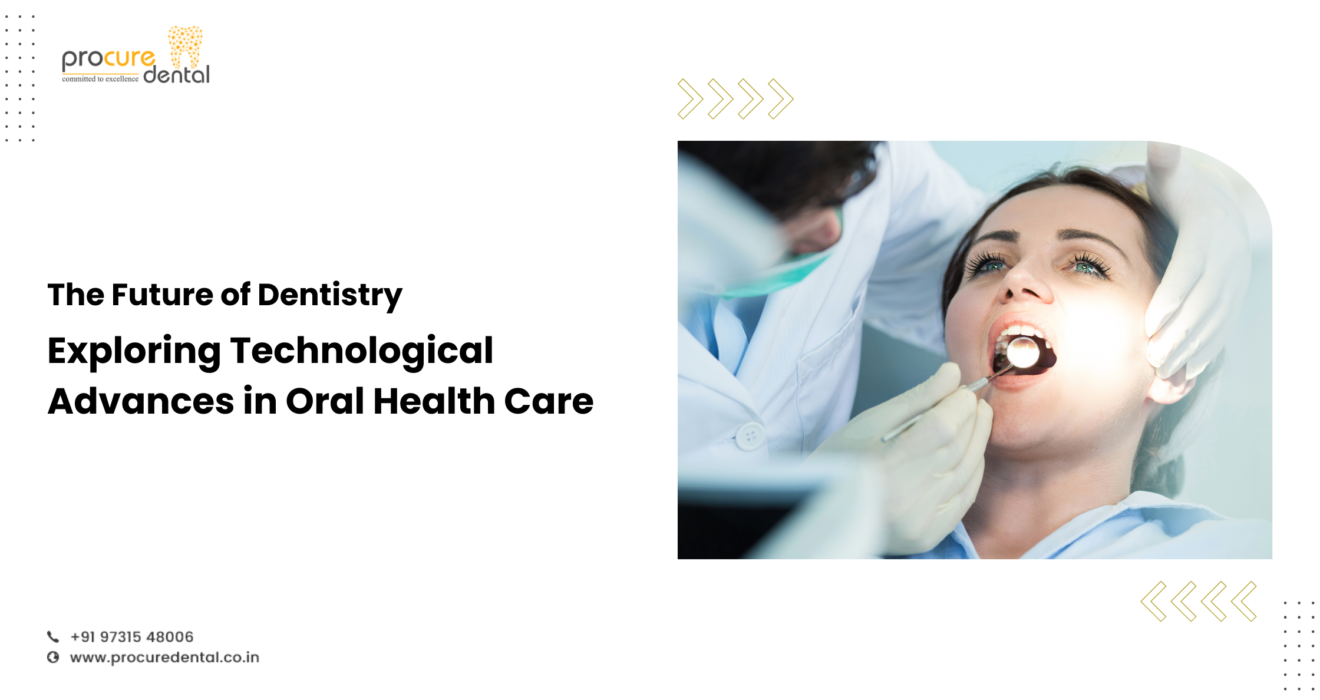The Future of Dentistry: Exploring Technological Advances in Oral Health Care
Dentistry has come a long way from the days of rudimentary tools and techniques. Today, technological advancements are transforming the field, making dental care more efficient, effective, and comfortable for patients. In this blog, we will delve into some of the most exciting technological innovations in dentistry and explore how they are revolutionizing oral health care.
Cutting-Edge Technologies in Dentistry
- Laser Dentistry: Lasers are becoming increasingly popular in dental treatments due to their precision and efficiency. They can be used for a variety of procedures, including gum reshaping, cavity removal, and teeth whitening. Laser dentistry often results in less pain and a quicker recovery time compared to traditional methods, making it a preferred choice for many patients.
- 3D Printing: The advent of 3D printing technology has significantly impacted dentistry, particularly in the creation of custom dental appliances. From crowns and bridges to dentures and orthodontic devices, 3D printing allows for highly accurate and personalized dental solutions. This technology also speeds up the production process, reducing waiting times for patients.
- Digital Impressions: Gone are the days of uncomfortable and messy dental molds. Digital impression systems use advanced scanning technology to create precise digital models of a patient’s teeth. These digital impressions are not only more comfortable for the patient but also more accurate, leading to better-fitting dental restorations.
- Teledentistry: The rise of telehealth has extended to dental care, allowing patients to consult with their dentists remotely. Teledentistry can be particularly beneficial for initial consultations, follow-up appointments, and providing care to patients in remote or underserved areas. It enhances access to dental care and can improve patient outcomes by facilitating timely interventions.
- Intraoral Cameras: Intraoral cameras are small, high-resolution cameras that dentists use to get a close-up view of a patient’s mouth. These cameras can capture detailed images that can be displayed on a monitor, allowing patients to see what the dentist sees. This technology improves diagnosis accuracy and helps patients better understand their oral health needs.
- Cone Beam Computed Tomography (CBCT): CBCT is a specialized type of X-ray that provides 3D images of the teeth, soft tissues, nerve pathways, and bone in a single scan. This technology is invaluable for complex dental procedures, such as implant placement and root canal therapy, as it offers a comprehensive view of the patient’s oral anatomy.
- CAD/CAM Technology: Computer-Aided Design and Computer-Aided Manufacturing (CAD/CAM) technology is used to design and create precise dental restorations like crowns, veneers, and bridges. This technology enhances the accuracy and fit of restorations, leading to better patient outcomes and reduced chair time.
Benefits of Technological Advancements in Dentistry
- Improved Accuracy and Precision: Advanced technologies like digital impressions, 3D printing, and CAD/CAM systems allow for highly accurate and precise dental treatments. This results in better-fitting restorations and more successful outcomes.
- Enhanced Patient Comfort: Technologies such as laser dentistry and digital impressions reduce discomfort and pain during dental procedures. Patients experience less anxiety and a more pleasant dental visit.
- Faster Treatment Times: Innovations like 3D printing and CAD/CAM technology speed up the production of dental appliances and restorations, reducing the waiting time for patients and enabling quicker treatment completion.
- Better Diagnosis and Treatment Planning: Tools like intraoral cameras and CBCT provide detailed images that enhance the dentist’s ability to diagnose and plan treatments accurately. This leads to more effective and efficient dental care.
- Increased Access to Care: Teledentistry expands access to dental care, especially for individuals in remote or underserved areas. It enables timely consultations and follow-ups, improving overall patient care.
Conclusion
Technological advancements are revolutionizing the field of dentistry, offering numerous benefits for both patients and dental professionals. From improving accuracy and precision to enhancing patient comfort and access to care, these innovations are shaping the future of oral health care. As technology continues to evolve, we can expect even more exciting developments that will further transform the way we approach dental treatment, making it more efficient, effective, and patient-friendly. Embracing these advancements is key to ensuring optimal oral health and overall well-being.



